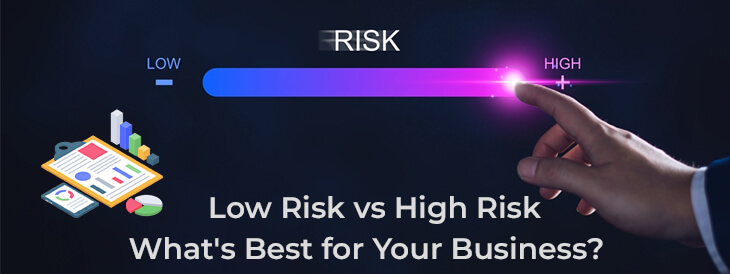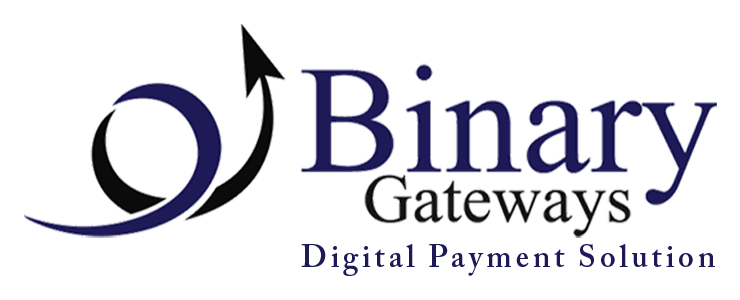Low Risk vs High Risk – What’s Best for Your Business?
Low Risk vs High Risk – What’s Best for Your Business?

Choosing the right merchant account type for your business can be daunting. Especially when deciding between low-risk and high-risk accounts, it’s essential to weigh the benefits and drawbacks of each. Both options have unique features, and understanding them will help you determine the best choice for your specific needs.
Understanding Merchant Accounts: Their Significance for Your Business
Think of merchant accounts as the silent heroes of e-commerce, masterfully ensuring smooth transactions between your business and your customers. Able to process payments from various sources, primarily debit and credit cards, they’re an indispensable part of your business. The choice between a low-risk and high-risk merchant account can be a game-changer. This crucial decision can influence everything from your fee structure to your business operations.
Although they might seem similar at first, these two types of accounts have distinct differences. Both come with their share of advantages and disadvantages. Whichever you choose can either raise your business to new heights or hold you back. Remember, your merchant account should match your business needs like a well-tailored suit, enhancing your operations without restricting growth.
Some Related Blogs
- ADULT TOYS MERCHANT ACCOUNT: WHAT EVERY BUSINESS SHOULD KNOW
- THE INS AND OUTS OF SETTING UP A MERCHANT ACCOUNT RESERVE
- MAXIMIZING PROFITS WITH CBD: UNDERSTANDING THE BENEFITS OF A MERCHANT ACCOUNT
- SECURE PAYMENT PROCESSING FOR YOUR ECIGARETTE BUSINESS | BINARY GATEWAYS
Decoding the Low-Risk Merchant Account: Less Risk, More Accessibility
Delving into low-risk merchant accounts, one quickly discovers that their appeal lies in simplicity and affordability. Regarded as “low risk” because they typically associate with industries that don’t court high chargeback or fraud rates, these accounts are the favorites of traditional brick-and-mortar shops, eateries, and many e-commerce platforms. Not only are they easier to establish, but they also generally boast lower fees than their high-risk counterparts.
This makes them highly attractive to businesses looking for cost-effective solutions. Their allure doesn’t stop there. Low-risk merchant accounts also come with enticing perks, like straightforward approval processes, reduced transaction costs, and more flexible contract terms, making them a desirable choice for many businesses.
Unveiling the High-Risk Merchant Account: Greater Risk, Greater Potential
While the high-risk merchant account may seem daunting due to its name, it’s actually a preferred choice for certain industries. Businesses in fields such as online gambling, adult entertainment, and travel services often lean toward high-risk accounts.
This is due to these industries’ predisposition to higher levels of chargebacks, returns, or fraud. True, these accounts come with their own set of challenges, including higher fees and more stringent terms. But, they also deliver some notable benefits.
One of them is stronger protection against chargebacks, an essential feature for businesses dealing with higher-risk transactions.
Plus, with a high-risk merchant account, you have the opportunity to penetrate global markets. It’s a daring choice but one that can open doors to significant growth and new clientele.
Making the Choice: Low Risk vs High Risk Merchant Account
Choosing between a low-risk and high-risk merchant account isn’t a one-size-fits-all decision. It’s a strategic call that pivots on your unique business factors. If your enterprise operates in a conventional field with fewer transactions and a lower likelihood of chargebacks, a low-risk merchant account may be your best bet.
However, if you’re in a high-risk industry, regularly process a large number of transactions, or have a higher chargeback ratio, you might want to consider a high-risk merchant account. Your choice should not only serve your present needs but also align with your future growth ambitions.
Crucial Factors to Consider When Choosing a Merchant Account
Venturing into the world of merchant accounts, several critical considerations come into play. Your business’s nature, the volume of transactions you handle, and the risk profile of your industry are all pivotal elements to think about. Delve deeper to investigate the provider’s fee structure and contract conditions – these elements shouldn’t just be skimmed over; they’re crucial in your decision-making.
How about the services they offer? Do they cater to your specific business requirements? Lastly, don’t neglect the provider’s reputation and their level of customer support. Remember, you’re not just opening an account, you’re establishing a relationship that will influence your business’s financial landscape. Therefore, ensure that the provider you choose is a trustworthy ally in your business journey.
Achieving Balance: Blending Low-Risk and High-Risk Merchant Accounts
Striking the right equilibrium between low-risk and high-risk merchant accounts can be a savvy business move. By maintaining the consistency of a low-risk account along with the adventurous spirit of a high-risk one, you get the best of both worlds. This dynamic duo can enhance your business’s ability to cater to a broader audience while keeping a lid on operational expenses.
Moreover, it can safeguard your business from excessive chargebacks or potential fraud associated with high-risk transactions. Having both types of accounts can indeed offer you a balanced strategy that not only optimizes your profitability but also bolsters your financial security. It’s like having a steady sailboat for calm waters and a robust ship for stormy seas – a perfect blend to navigate your business towards financial success.
![]()
Email us anytime!
Email customer service 24/7 at info@binarygateways.com
![]()
Call us anytime!
Reach customer care 24/7 at (801) 761-5001
